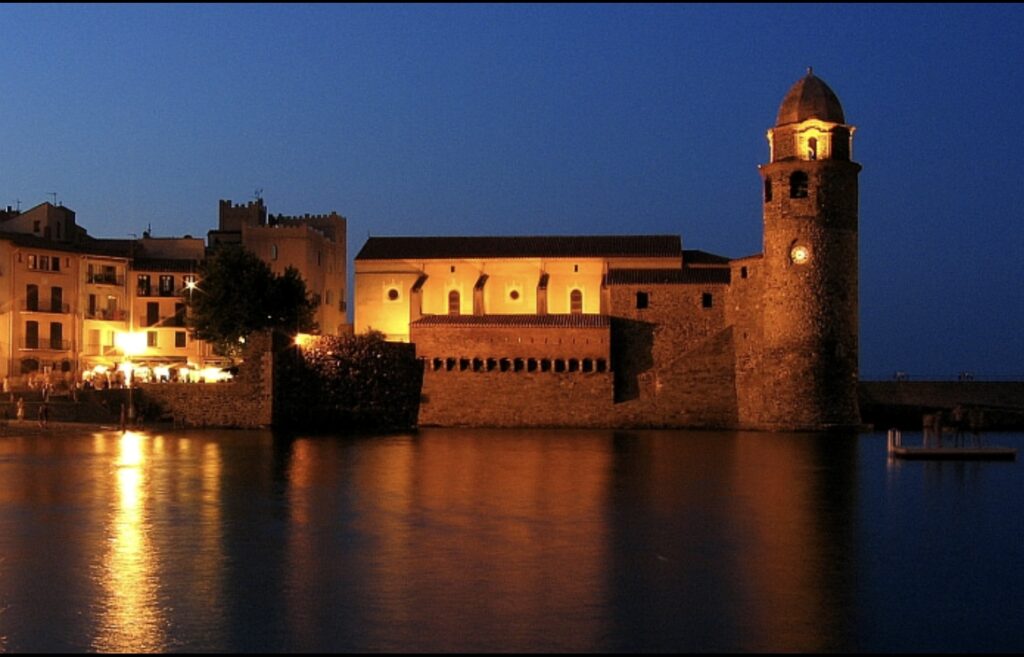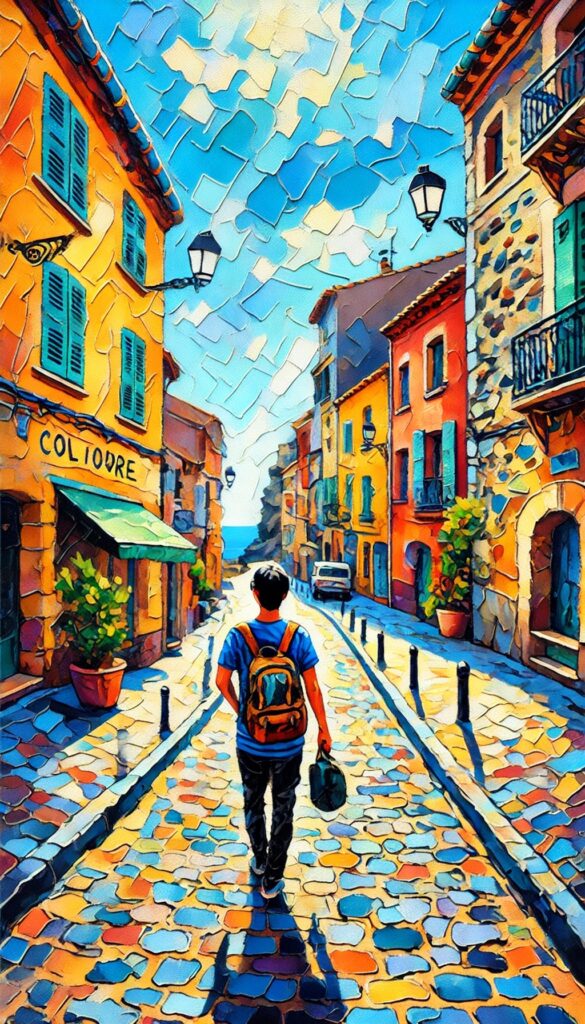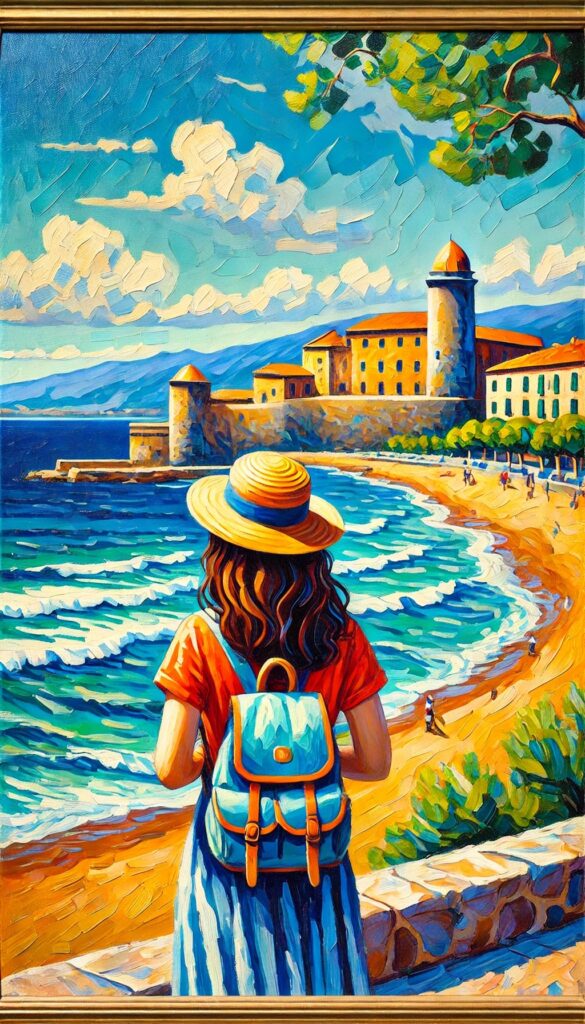ChatGPT:
Collioure is a picturesque coastal town located in the southern part of France, in the Pyrénées-Orientales department of the Occitanie region. Nestled between the Mediterranean Sea and the Pyrenees mountains, it is known for its beautiful beaches, charming old town, and historic sites. The town boasts a rich artistic heritage, having inspired famous painters like Henri Matisse and André Derain, who were captivated by its vibrant colors and light.
Collioure has a rich history that spans several millennia. Its origins and development are deeply intertwined with its strategic coastal location, which has made it a significant site for various civilizations over the centuries.
Ancient and Medieval Origins
- Early Settlements: The area around Collioure has been inhabited since ancient times, with evidence of human activity dating back to prehistoric periods. The Greeks and Romans recognized its strategic importance, using it as a port.
- Medieval Era: By the Middle Ages, Collioure had become an important maritime hub. The town was fortified with the construction of the Château Royal de Collioure, a castle that dates back to at least the 7th century but was significantly expanded in the 13th century by the Kings of Majorca, who ruled the region at that time.
Renaissance and Early Modern Period
- Catalan Influence: Throughout its history, Collioure has been heavily influenced by its proximity to Catalonia. The town frequently changed hands between French and Spanish rulers, which is reflected in its architecture and cultural heritage.
- Military Significance: During the Renaissance, Collioure’s strategic location made it a focal point in conflicts between France and Spain. The fortifications were further strengthened by Vauban, the famous French military engineer, in the late 17th century.
19th and 20th Centuries
- Fishing and Agriculture: Traditionally, the economy of Collioure was based on fishing, particularly anchovies, and viticulture. The local wines, especially Banyuls, are well-regarded.
- Artistic Hub: In the early 20th century, Collioure gained fame as an artistic center. The arrival of Henri Matisse and André Derain in 1905 marked the beginning of its association with the Fauvist movement. These artists were inspired by the town’s stunning light and vibrant colors, and their works helped to put Collioure on the cultural map.
Modern Development
- Tourism: Today, Collioure is a popular tourist destination, known for its picturesque scenery, historic sites, and artistic heritage. The town has carefully preserved its historical charm, with narrow, winding streets, colorful houses, and a scenic harbor.
- Cultural Festivals: Collioure hosts various cultural events and festivals throughout the year, celebrating its rich history and artistic legacy. The town remains a vibrant community, balancing its historical roots with modern tourism and cultural activities.
Collioure’s development from an ancient port to a modern tourist destination reflects its enduring appeal and strategic importance. Its unique blend of history, culture, and natural beauty continues to attract visitors from around the world.
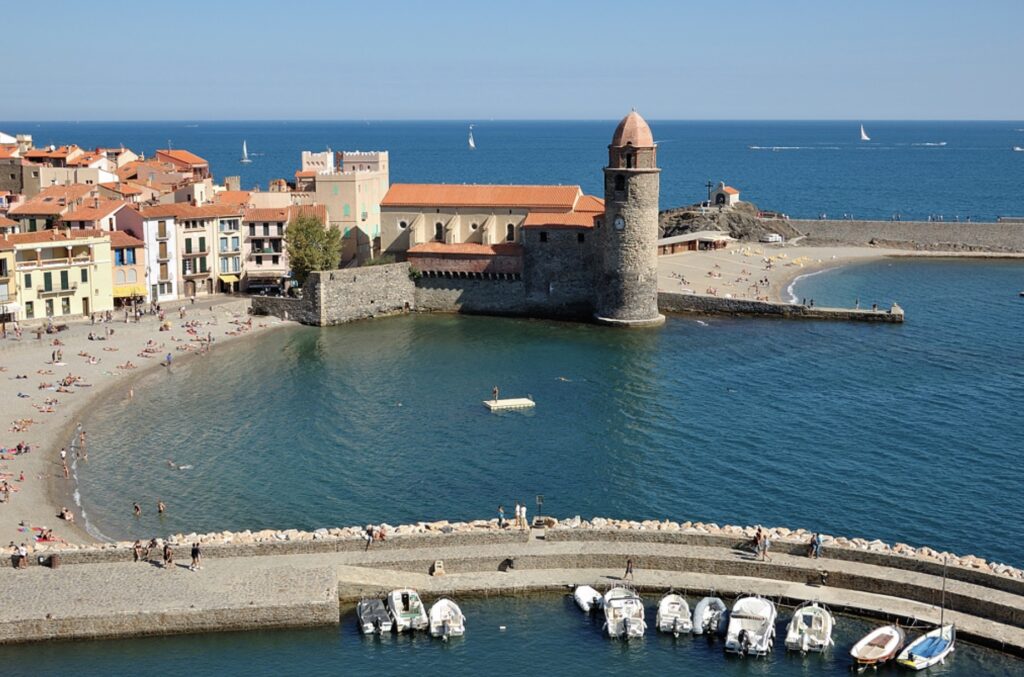
Collioure boasts a variety of historical monuments and tourist attractions that reflect its rich history and vibrant culture. Here are some notable ones:
Historical Monuments
- Château Royal de Collioure (Royal Castle):
- A medieval fortress that dominates the harbor, originally built in the 7th century and expanded by the Kings of Majorca and later by Vauban in the 17th century.
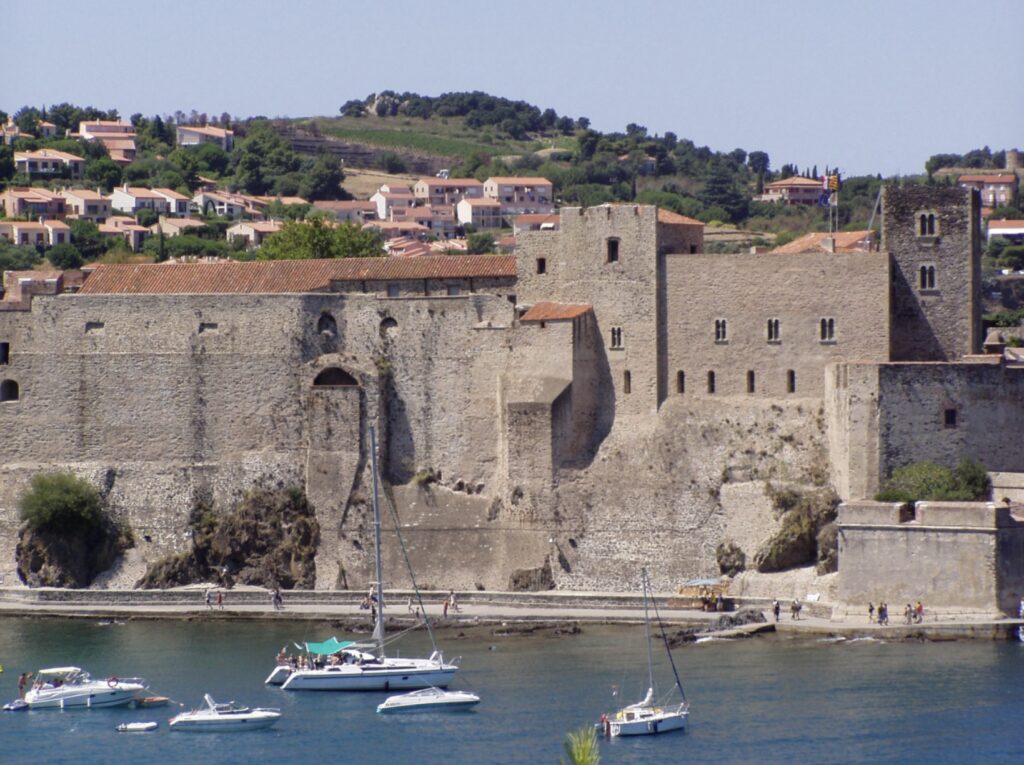
- Église Notre-Dame-des-Anges:
- A beautiful Baroque church built between 1684 and 1691, known for its distinctive bell tower, which was originally a lighthouse.
- Fort Saint-Elme:
- A 16th-century fortress situated on a hill overlooking Collioure, offering panoramic views of the town and the Mediterranean Sea.
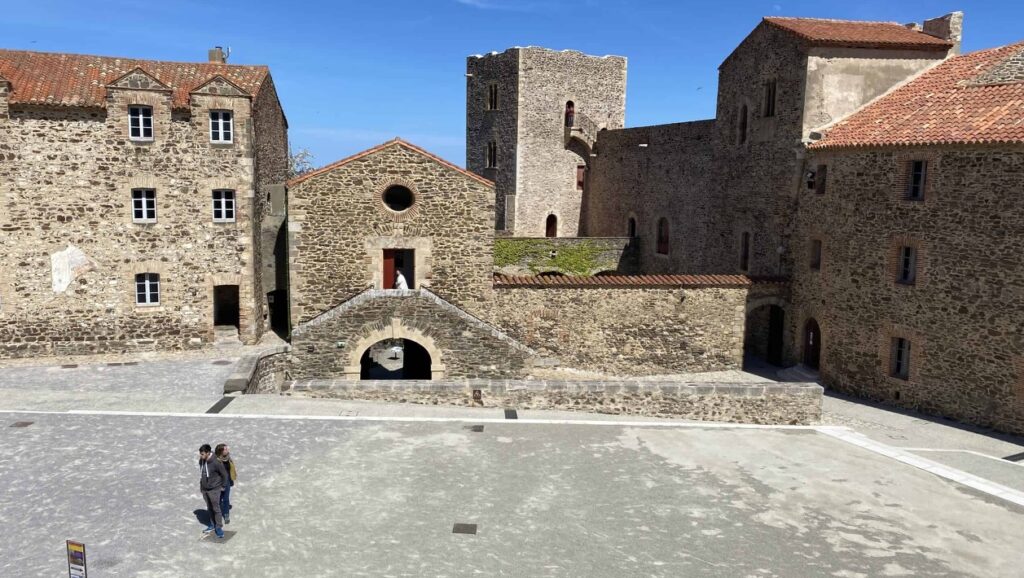
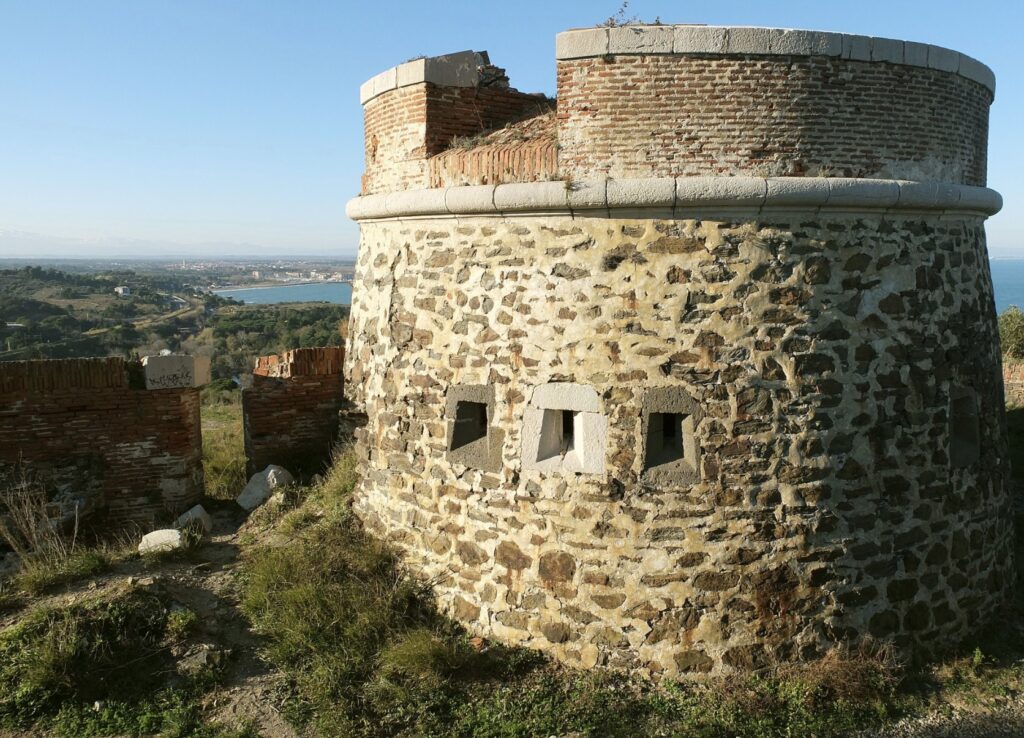
- Moulin de Collioure (Collioure Windmill):
- A restored 14th-century windmill located on the slopes of the hills surrounding the town, used for milling grain and later for producing olive oil.
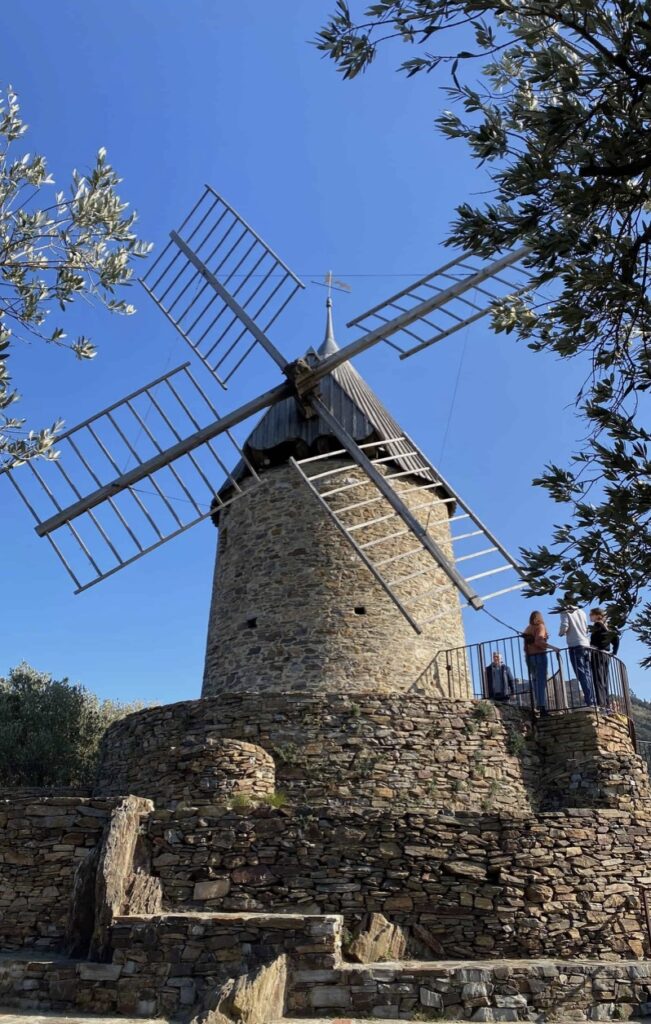
- Le Phare (The Lighthouse):
- An iconic structure that serves as a picturesque subject for many artists and photographers, originally part of the church’s bell tower.
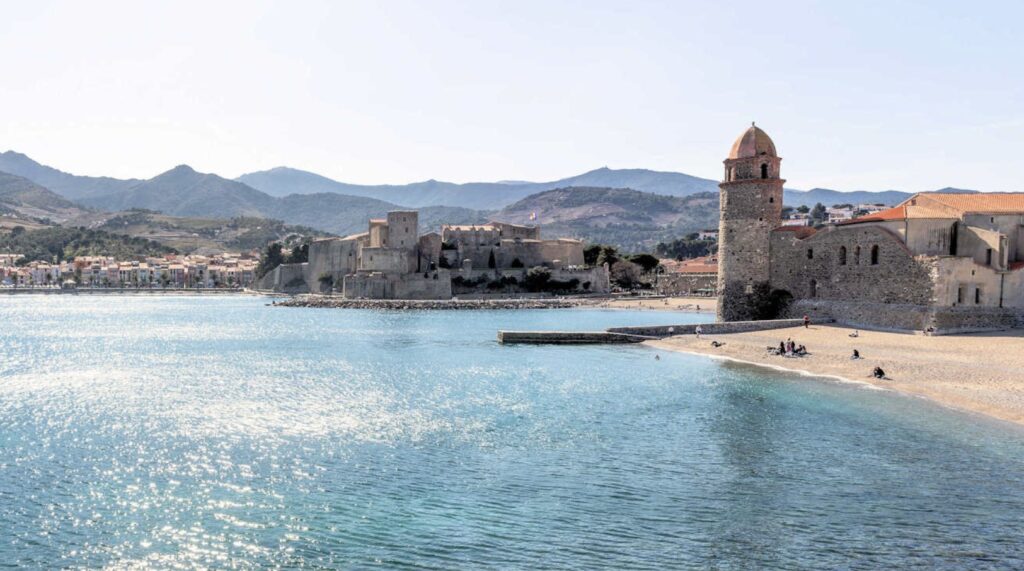
- The Faubourg Quarter:
- The historical heart of Collioure, with narrow, winding streets lined with colorful houses, art galleries, and boutiques.
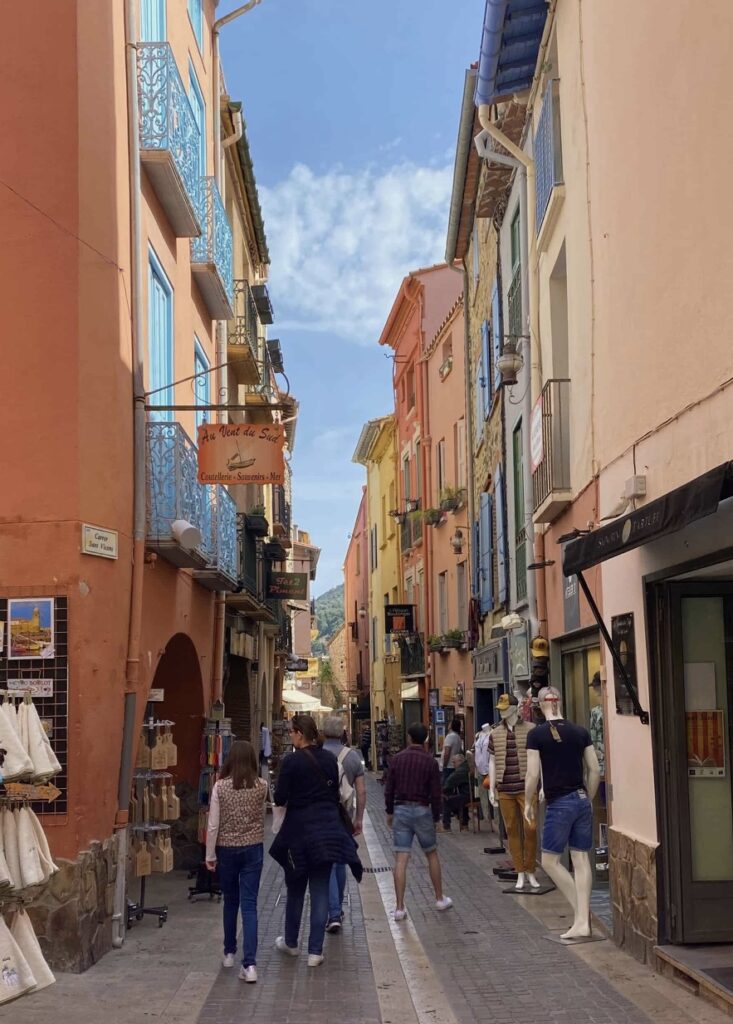
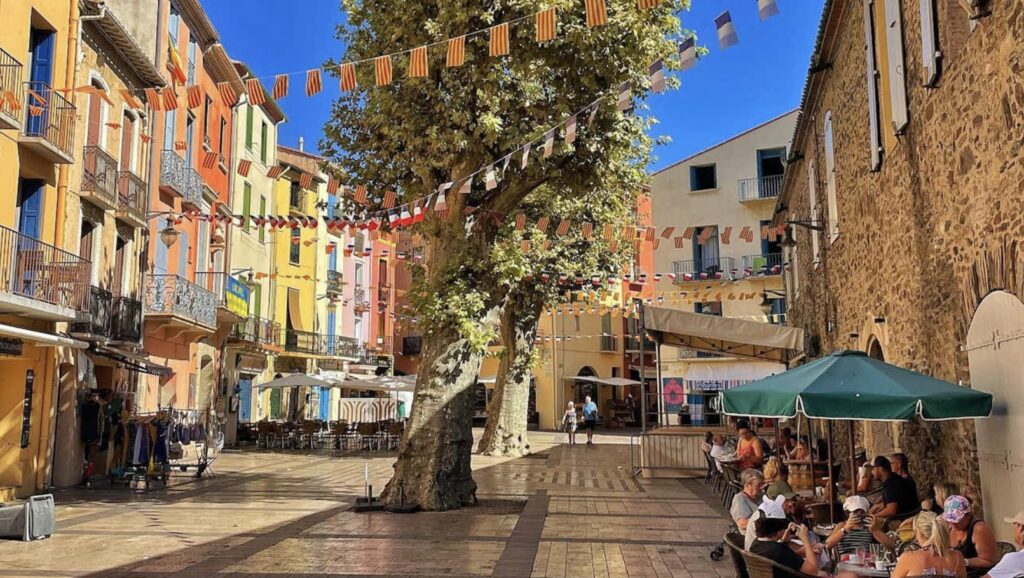
Tourist Attractions
- Les Barques Catalanes (Catalan Boats):
- Traditional fishing boats that are often seen in the harbor, adding to the town’s charm and offering boat trips for visitors.
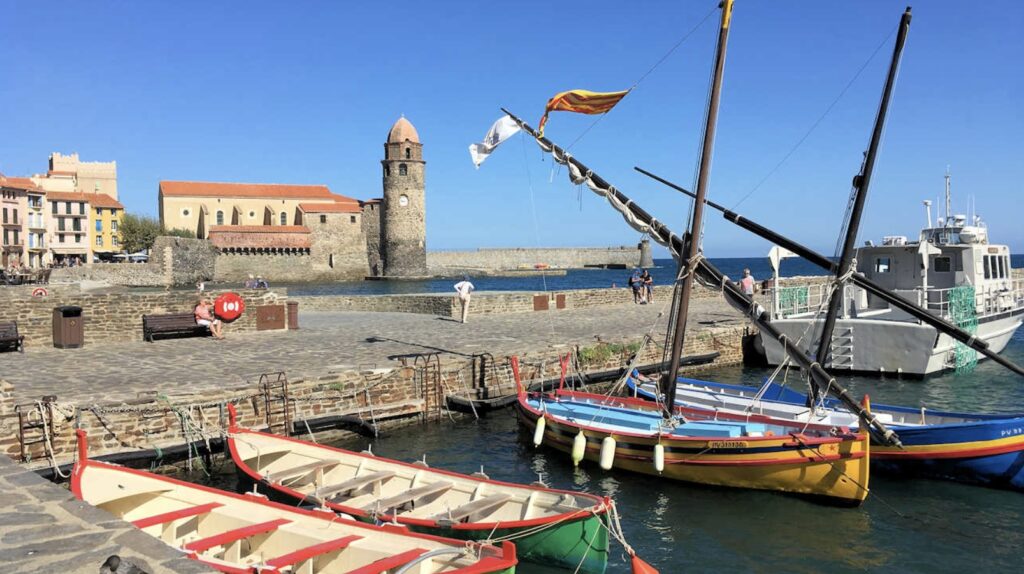
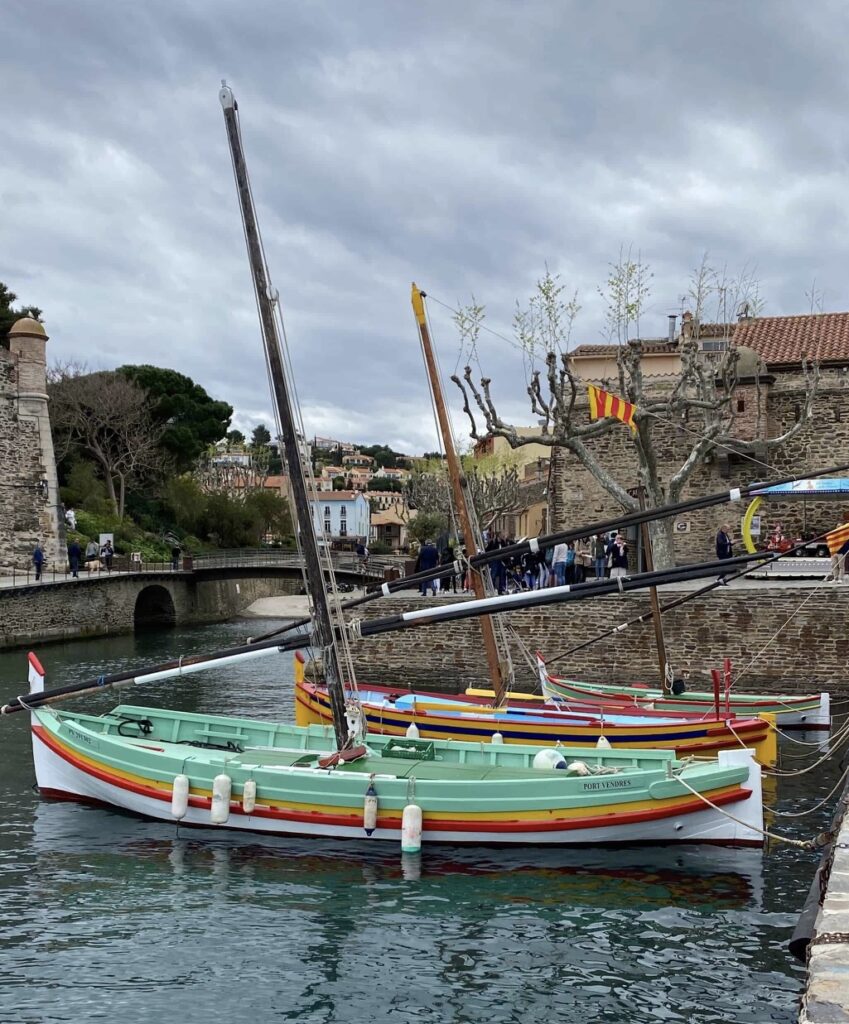
- Les Caves Byrrh:
- A historic winery and producer of the famous Byrrh aperitif, offering guided tours and tastings.
- Museum of Modern Art (Musée d’Art Moderne):
- Established in 1930 by artist Jean Peské, the museum showcases works by artists who were inspired by Collioure, including Matisse and Derain.

- The Fauvism Trail:
- A walking trail that takes visitors to various locations around Collioure where Matisse and Derain painted their famous works, marked by reproductions of the paintings at each site.
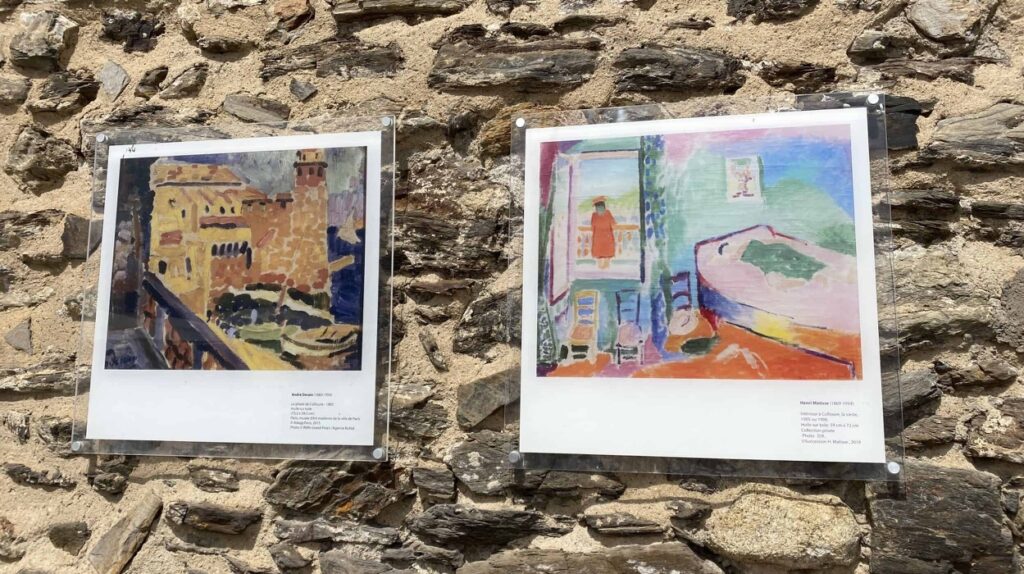
- Collioure Beaches:
- The town has several beautiful beaches, including Boramar Beach, Saint-Vincent Beach, and Ouille Beach, perfect for swimming, sunbathing, and water sports.
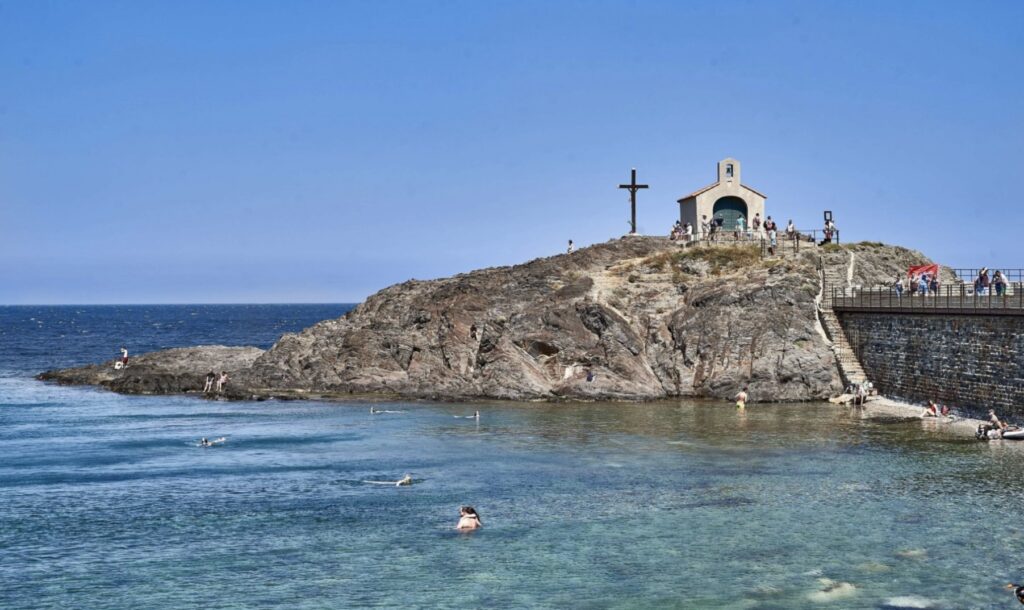
- The Market:
- Held twice a week, the market offers a variety of local produce, artisanal goods, and traditional foods, providing a taste of the local culture.
- Saint Vincent Chapel:
- Located on a rocky islet, this small chapel is a serene spot with a stunning view of the sea, often depicted in paintings.
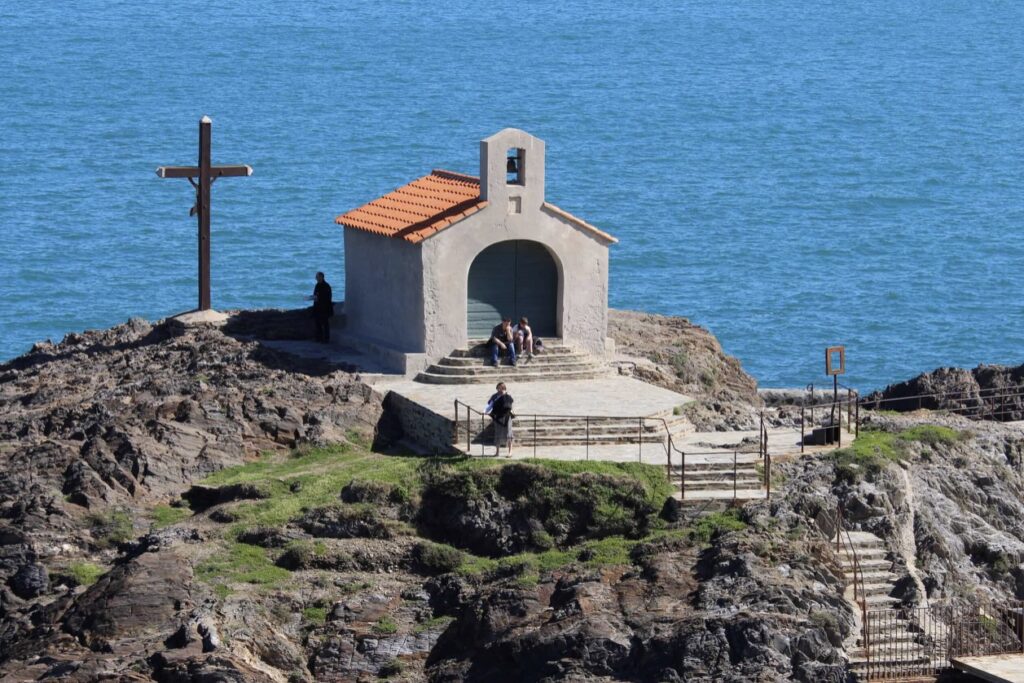
- Les Orgues d’Ille-sur-Têt:
- A unique natural formation of rock columns and cliffs, located a short drive from Collioure, offering a scenic and geological interest.
Collioure’s blend of historical monuments, cultural attractions, and natural beauty makes it a compelling destination for visitors seeking both relaxation and inspiration.
In Collioure, several picture frames are strategically placed around the town and its beaches to highlight specific views that inspired famous painters. Here are some notable ones:
- Le Phare (The Lighthouse):
- This frame captures the iconic view of the Collioure lighthouse, a frequent subject in many artists’ works, including Henri Matisse.
- Le Château Royal (The Royal Castle):
- Overlooking the harbor, this frame focuses on the Royal Castle, an essential landmark that has been depicted in numerous paintings.
- La Chapelle Saint-Vincent (Saint Vincent Chapel):
- Positioned to showcase the chapel on the islet of Saint Vincent, this frame highlights a spot painted by both Matisse and Derain.
- Les Barques Catalanes (Catalan Boats):
- This frame is set to capture the vibrant and colorful Catalan boats docked at the beach, another popular subject for painters.
- La Plage Boramar (Boramar Beach):
- Focusing on the beach with the Church of Notre-Dame-des-Anges in the background, this view is frequently seen in various artworks.
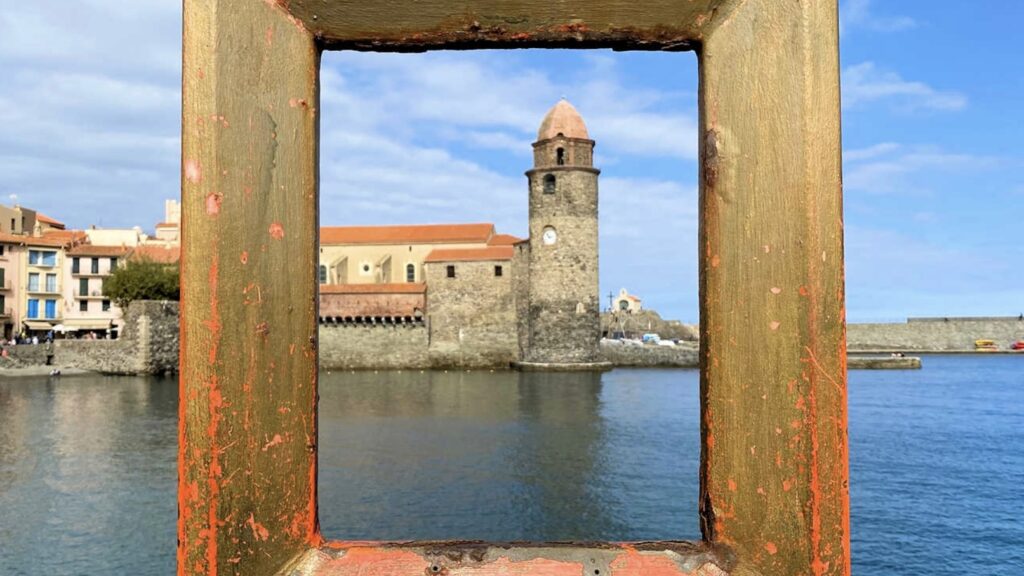
- Les Fauves’ Viewpoint:
- This frame offers a perspective of the town that the Fauvist painters, particularly Matisse and Derain, often painted from.
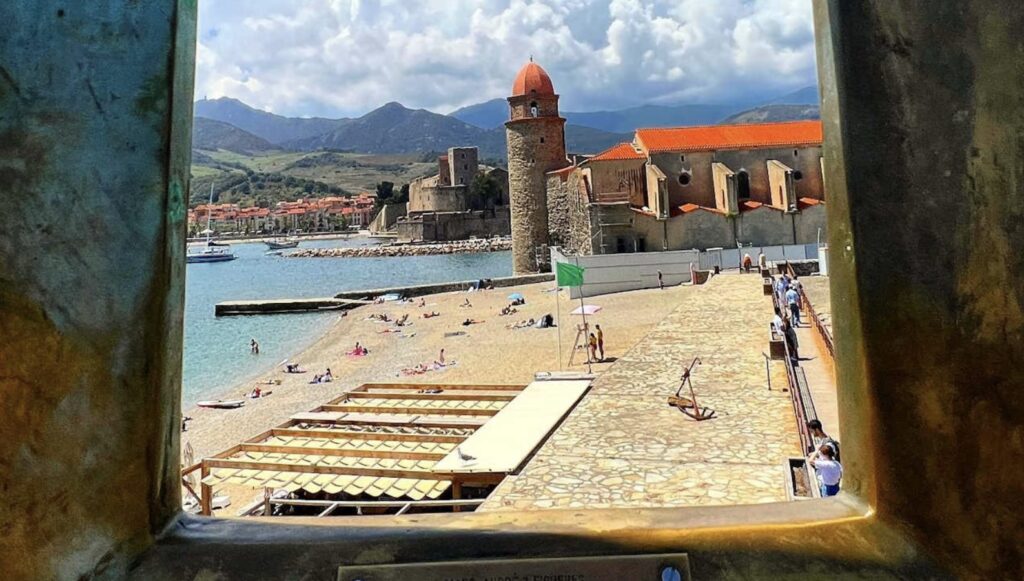
These frames not only guide visitors to appreciate the natural beauty of Collioure through the eyes of renowned artists but also celebrate the town’s significant contribution to the art world.
I
Some famous paintings associated with the views in Collioure:
- Henri Matisse – “View of Collioure”:
- This painting captures the vibrant colors of the town, focusing on the harbor and the buildings. Matisse used bold, expressive strokes and bright hues, emphasizing the unique light of the Mediterranean.
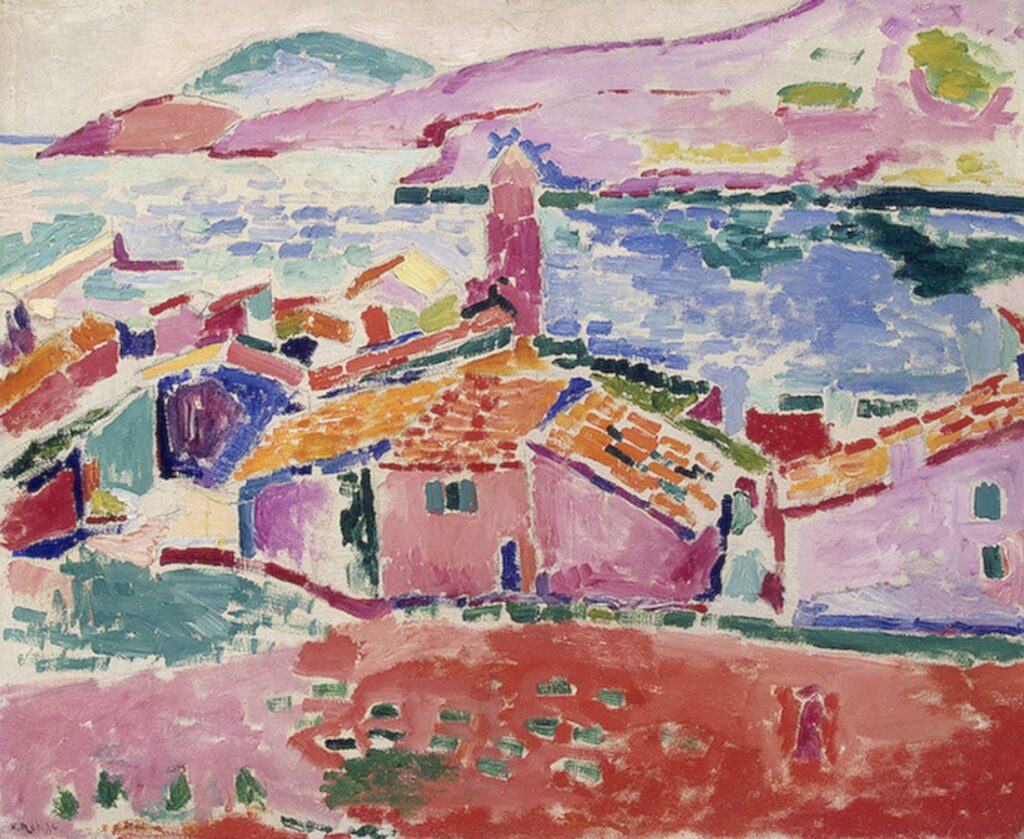
- André Derain – “Boats in the Harbor”:
- Derain’s painting of the harbor showcases the colorful Catalan boats with the backdrop of the town’s architecture. His use of vivid colors and dynamic brushwork reflects the Fauvist style.
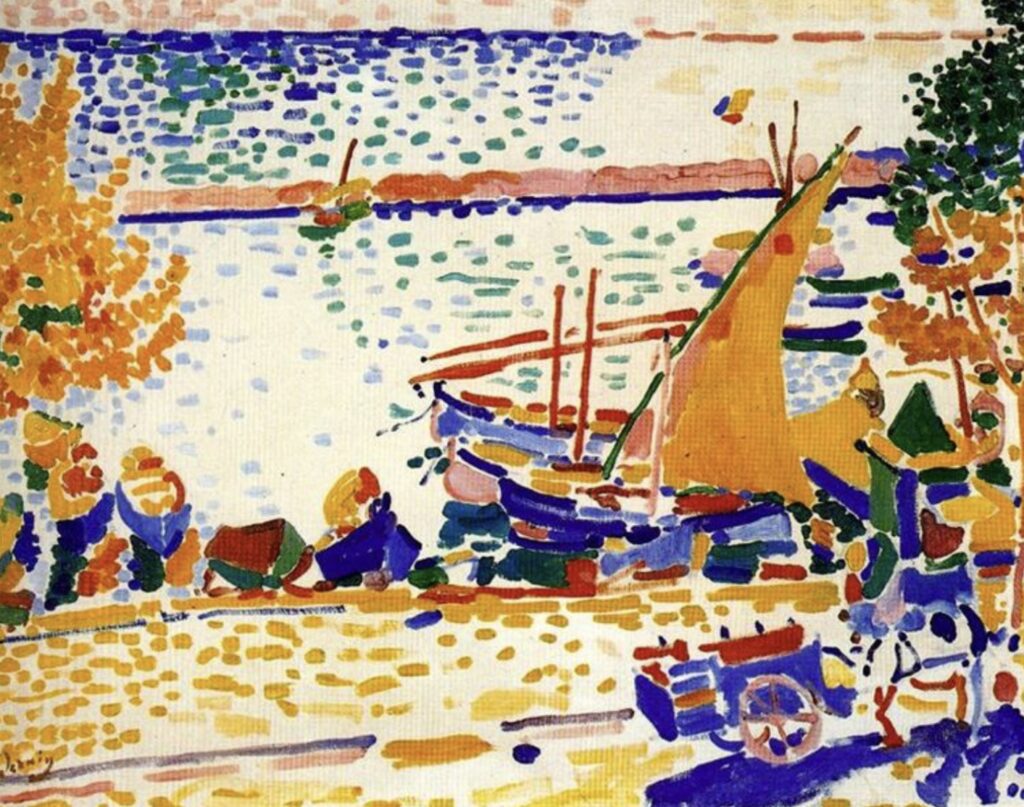
- Henri Matisse – “The Open Window”:
- This famous piece features an open window looking out onto the harbor of Collioure, with boats and the sea. It’s known for its lively colors and the way it captures the light and atmosphere of the town.
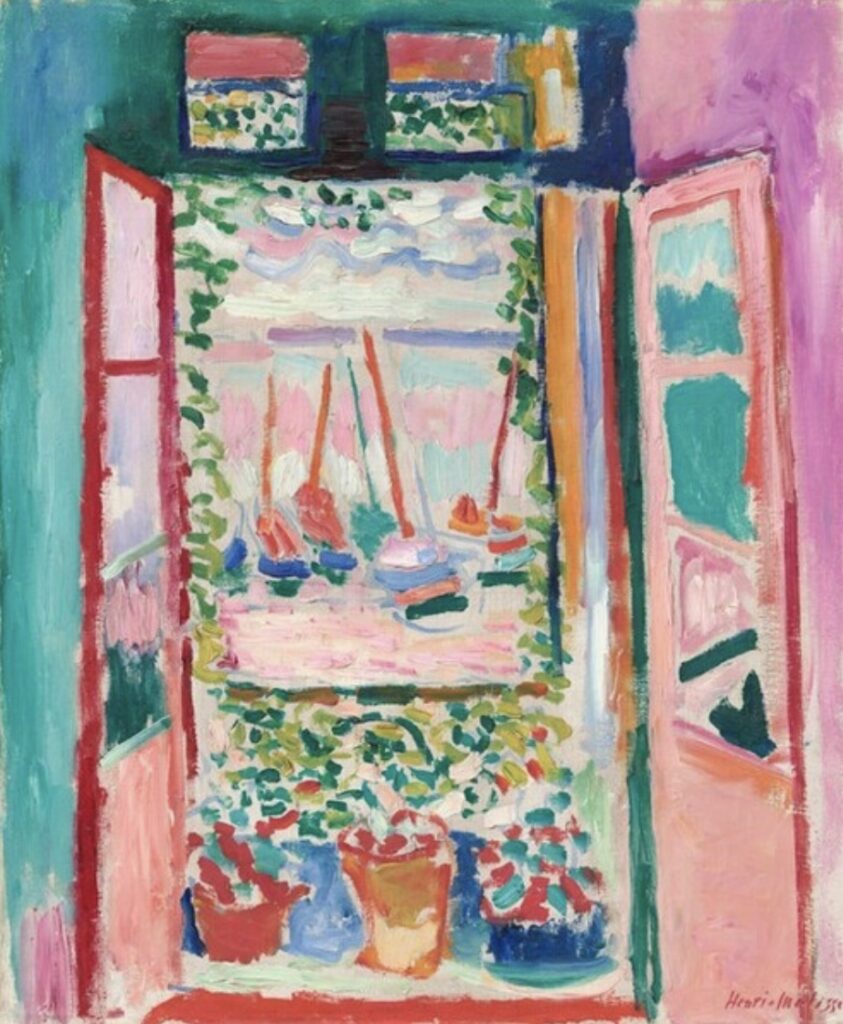
- Henri Matisse – “The Pink Wall”:
- This painting depicts a view of Collioure with its distinctive colorful buildings. The pink wall in the foreground contrasts with the blue sea and sky, highlighting Matisse’s fascination with color.
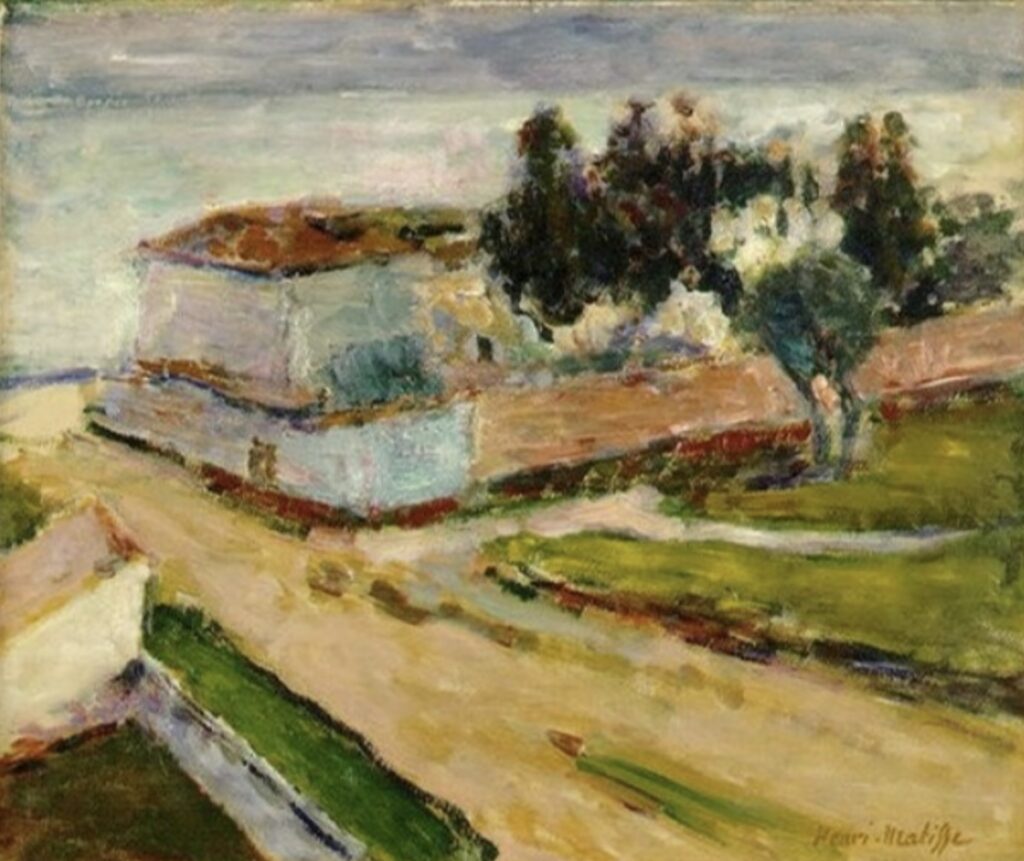
- André Derain – “Collioure”:
- This piece shows a panoramic view of Collioure, with the sea, the lighthouse, and the surrounding buildings. Derain’s use of strong colors and expressive brushwork conveys the beauty and vibrancy of the town.
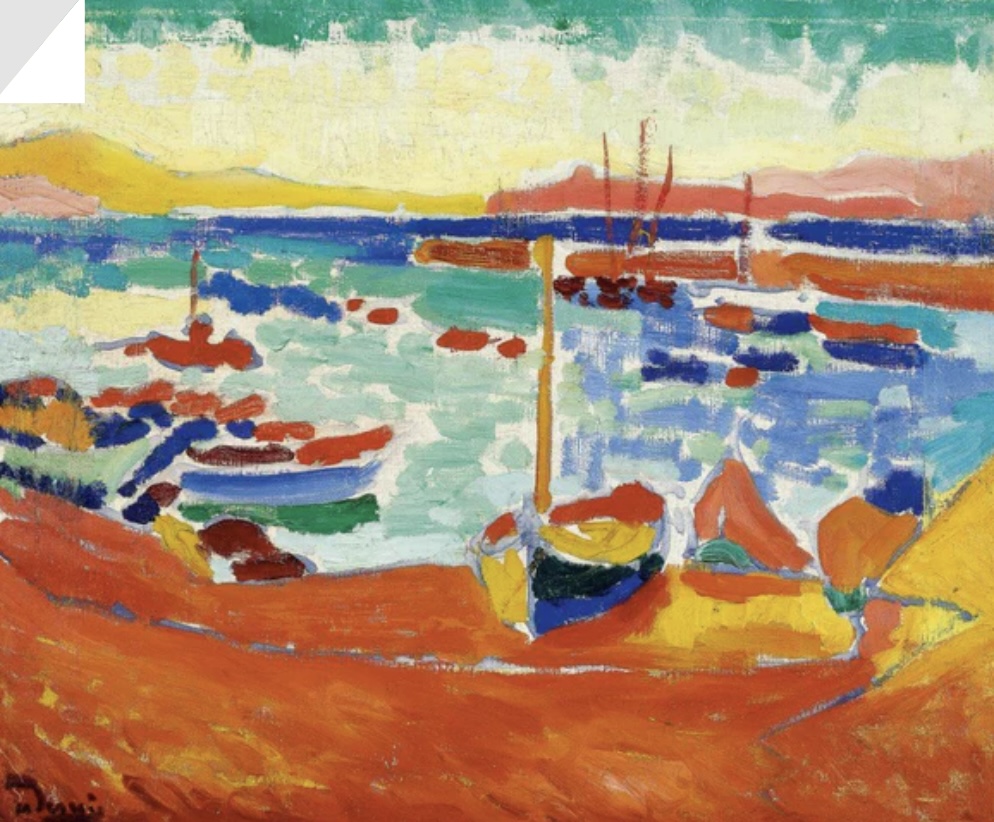
One-Day Walking Itinerary for Collioure
Morning
9:00 AM – Start at Château Royal de Collioure
- Begin your day with a visit to the Château Royal, exploring the medieval fortress and enjoying panoramic views of the harbor and surrounding areas.
10:30 AM – Walk to Église Notre-Dame-des-Anges
- Stroll to the nearby church with its iconic bell tower. Spend some time admiring the Baroque interior and the stunning coastal views.
11:00 AM – Explore the Faubourg Quarter
- Wander through the narrow, winding streets of the Faubourg Quarter. Visit local art galleries and boutiques, and soak in the colorful, picturesque surroundings.
11:30 AM – Coffee Break at a Local Café
- Stop by a charming café such as Café Sola for a coffee and a pastry. Try a “croissant” or “pain au chocolat” while enjoying the vibrant atmosphere.
Midday
12:00 PM – Visit the Collioure Windmill (Moulin de Collioure)
- Walk up to the restored windmill, enjoying the scenic path and views of the town and sea. Take some time to explore the site and take photos.
1:00 PM – Lunch at a Seafront Restaurant
- Head back to the seafront for lunch. Consider dining at a local restaurant like Le Neptune or La Voile, where you can enjoy fresh seafood such as “bouillabaisse” (fish stew) or “anchois de Collioure” (Collioure anchovies).
Afternoon
2:30 PM – Discover the Museum of Modern Art (Musée d’Art Moderne)
- After lunch, visit the Museum of Modern Art to see works by artists inspired by Collioure, including Matisse and Derain.
3:30 PM – Follow the Fauvism Trail
- Embark on the Fauvism Trail, which takes you to various spots around town where famous paintings were created. Each location is marked with reproductions of the artworks.
4:30 PM – Relax at Boramar Beach
- Take a break at Boramar Beach. Enjoy a swim in the Mediterranean or simply relax on the sand. If you’re interested in water sports, this is a great spot for snorkeling or paddleboarding.
Evening
6:00 PM – Sunset at Fort Saint-Elme
- Make your way to Fort Saint-Elme for stunning sunset views. The walk uphill is rewarded with breathtaking vistas of Collioure and the surrounding coastline.
7:30 PM – Dinner at a Local Bistro
- For dinner, choose a cozy bistro such as Restaurant Le Can Pla. Enjoy regional specialties like “cassoulet” or “duck confit,” paired with a glass of local Banyuls wine.
9:00 PM – Evening Stroll and Gelato
- End your day with a leisurely stroll along the waterfront. Stop by a gelateria like Gelateria Lorenzo for a scoop of artisanal gelato.
This itinerary provides a balanced mix of historical sites, cultural experiences, scenic walks, and culinary delights, allowing you to fully enjoy the charm and beauty of Collioure in one day.
